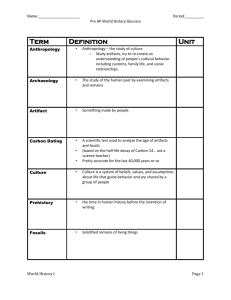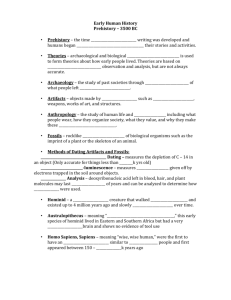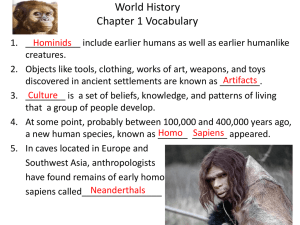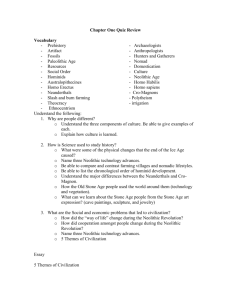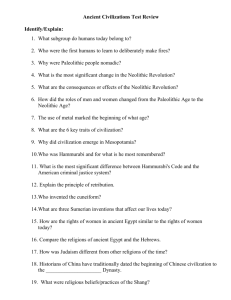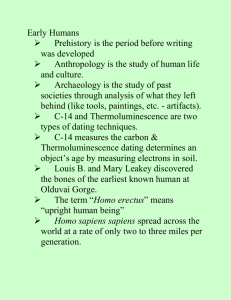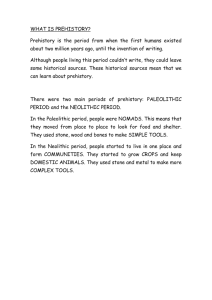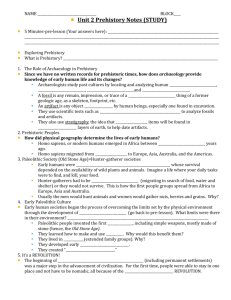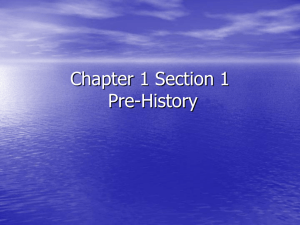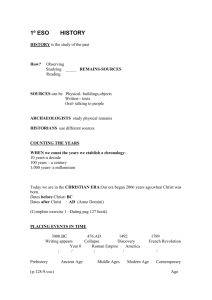Prehistory, Neolitic Revolution and
advertisement
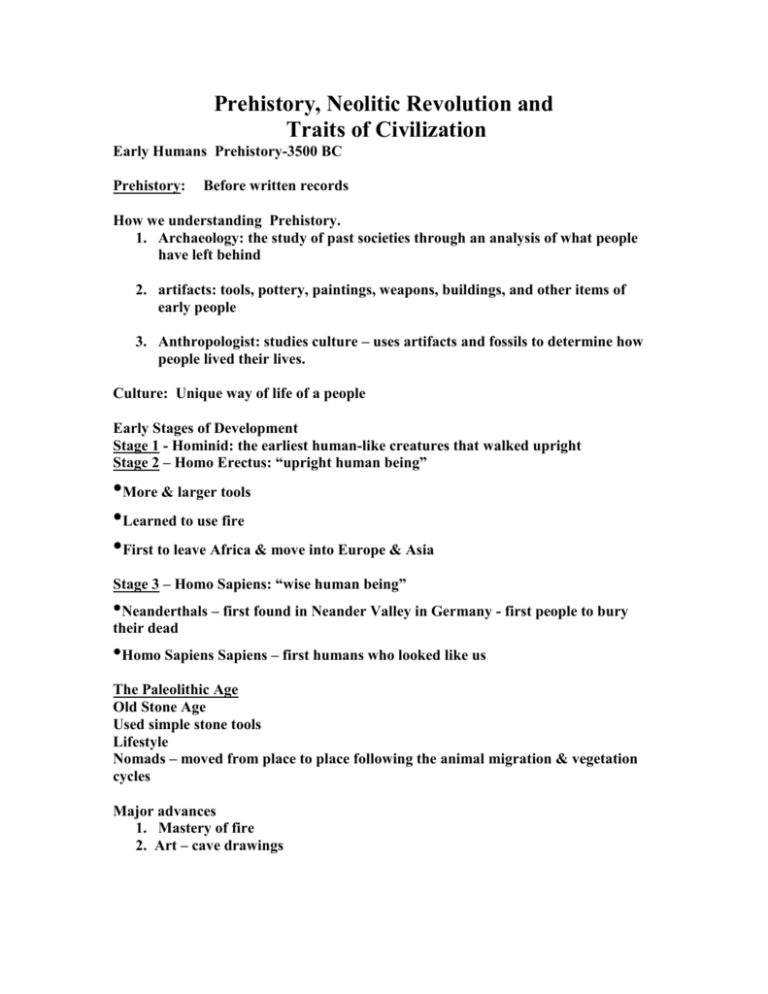
Prehistory, Neolitic Revolution and Traits of Civilization Early Humans Prehistory-3500 BC Prehistory: Before written records How we understanding Prehistory. 1. Archaeology: the study of past societies through an analysis of what people have left behind 2. artifacts: tools, pottery, paintings, weapons, buildings, and other items of early people 3. Anthropologist: studies culture – uses artifacts and fossils to determine how people lived their lives. Culture: Unique way of life of a people Early Stages of Development Stage 1 - Hominid: the earliest human-like creatures that walked upright Stage 2 – Homo Erectus: “upright human being” •More & larger tools •Learned to use fire •First to leave Africa & move into Europe & Asia Stage 3 – Homo Sapiens: “wise human being” •Neanderthals – first found in Neander Valley in Germany - first people to bury their dead •Homo Sapiens Sapiens – first humans who looked like us The Paleolithic Age Old Stone Age Used simple stone tools Lifestyle Nomads – moved from place to place following the animal migration & vegetation cycles Major advances 1. Mastery of fire 2. Art – cave drawings The Neolithic Revolution and the Rise of Civilization NEOLITHIC REVOLUTION: The shift from hunting of animals and gathering of food to the keeping of animals and the growing of food on a regular basis that occurred around 8000 B.C. Neolithic = Greek for “new stone” Consequences of the Neolithic Revolution: •Organized communities •Trading of goods •Systematic agriculture •Population explosion Civilization: a complex culture in which large numbers of people share a number of common elements 6 Characteristics of Civilization 1. Cities 2. Government 3. Religion 4. Social Structure 5. Writing 6. Art 1. The Rise of Cities First developed in river valleys where people could carry on large-scale farming to feed large populations 2. Government Growing population, need to maintain food supply, and build walls for defense led to organization of the government Organize & regulate human activity monarchs 3. Religion Developed to explain the workings of nature and the fact of their own existence Priests – power by divine authority & led rituals to gain the favor of the gods 4. Social Structure Middle Class farmers, artisans, and craftspeople 5. Writing 6. Art Temples built for worship & burial Paintings & Sculptures – developed to portray gods & goddesses or natural forces
